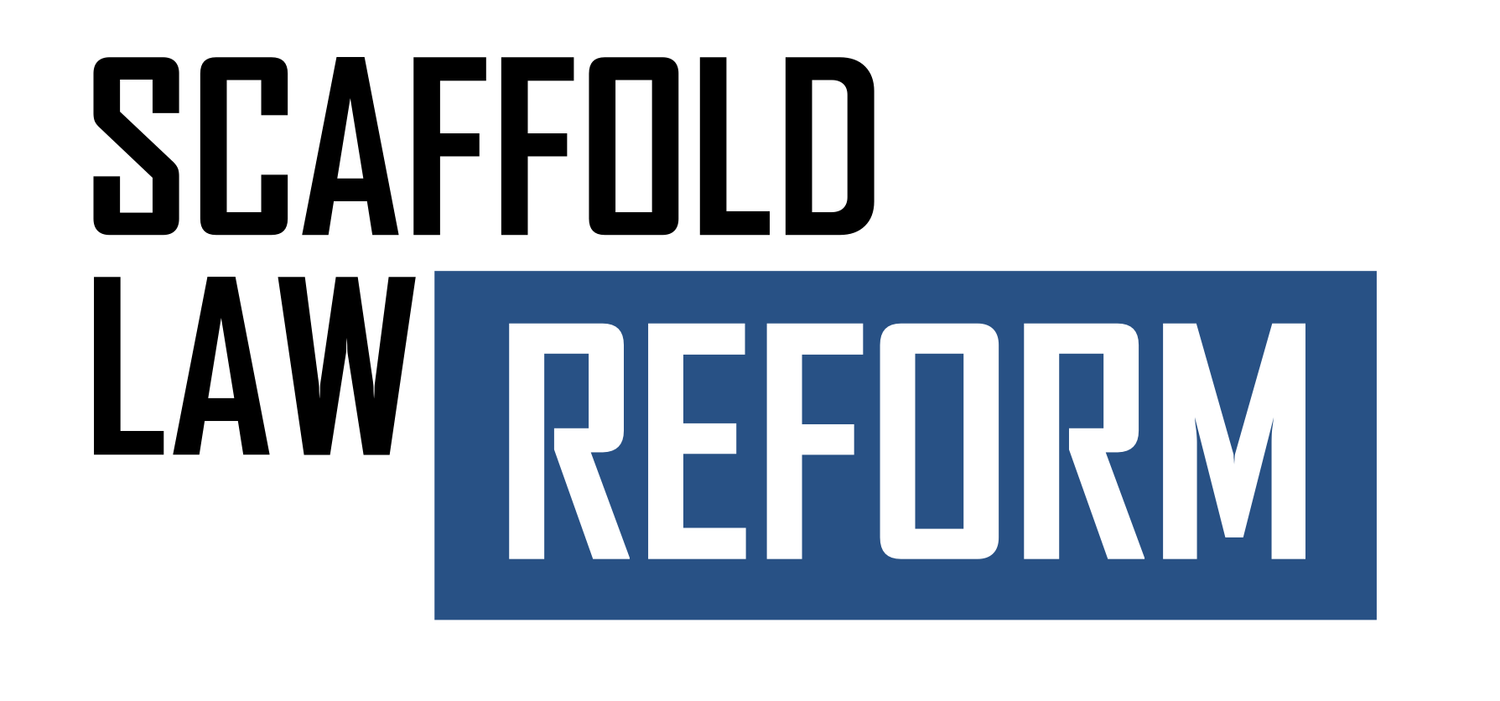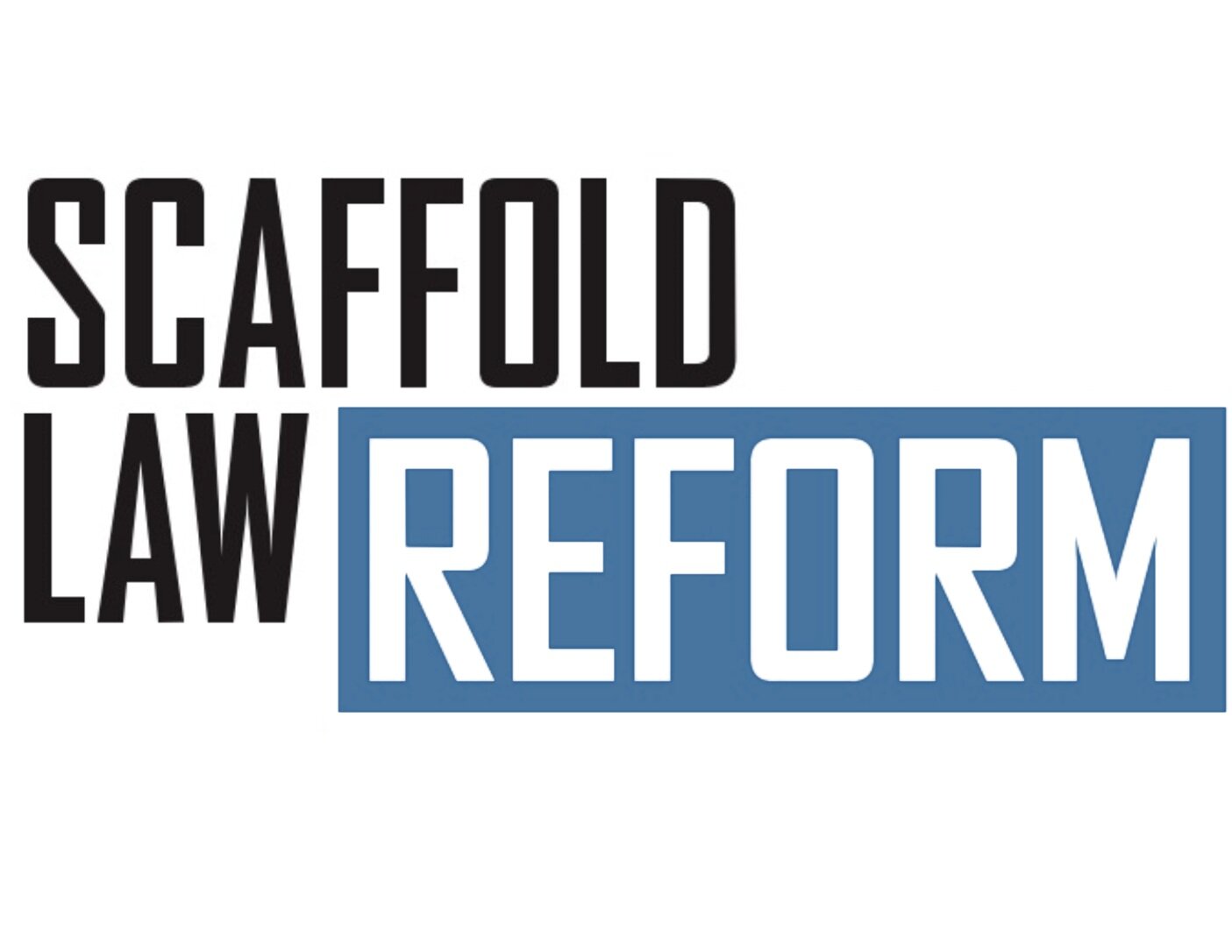Scaffold Law Raises Bills Stadium Construction Costs Sky High
By: Jacob Lewis
The Buffalo Bills stadium project is poised to cost millions of extra dollars because of New York’s unique Scaffold Law.
Every building project in New York is affected by the Scaffold Law. The Law places nearly absolute liability on general contractors and building owners when a worker experiences a gravity-related injury. The Law covers injuries such as falls from a raised platform like a scaffold and falling objects like a rock. The wide protections afforded by the Scaffold Law extend to almost any construction work.
The Scaffold Law has evolved since it was enacted in 1885. The Law began as a criminal statute, punishing a failure to provide safety equipment as a misdemeanor.[1] The Law was enacted at a time when building the New York City skyline cost the lives of many construction workers who were provided with no safety equipment. Since then, the Law has changed to offer a private right of action to injured employees. The Law now creates a nondelegable duty that cannot be diminished by comparative negligence.
The intent of the Scaffold Law is to make workplaces safer. However, the Law is not alone in this duty. Since the 1970s, most contractors now must also adhere to Occupational Safety and Health Administration (“OSHA”) safety standards. If a contractor violates these standards, they will not be qualified to work on many projects. Despite safety standards, it is unclear whether the Scaffold Law’s goal has been achieved. New York remains one of the most dangerous states for construction work.[2] In 2020, 24% of workplace deaths in New York occurred in construction.[3] That is 3% higher than the national average. Despite this, New York continues to look to the Scaffold Law as the answer for below-average safety ratings. Meanwhile, all other states have removed similar statutes in favor of a comparative negligence system.
The Scaffold Law creates a significant cost for construction in New York. It is considered a contributing factor to New York’s sky-high building costs. According to Joe Benedict of Conex Buffalo, the Law is not something that builders themselves really take into account. “It is what it is,” he says. This is because the Law does not add any direct cost for construction projects. Instead, it contributes to extremely costly insurance premiums. Scaffold Law claims, which occur frequently, create a significant risk for any project in New York. Insurance premiums reflect this increased risk, and the cost is passed onto the project. To add insult to injury, many insurers have abandoned the New York market because of the costly Scaffold Law.[4] Joe also adds on the Bills Stadium project the Law will hurt small contractors the most, who struggle to get the proper insurance at a fair price.
Other municipal projects have faced increased costs on account of the Scaffold Law. The ambitious infrastructure project connecting New York and New Jersey known as the “Gateway Project” is facing a potential additional $300 million in insurance costs.[5] The Gov. Mario Cuomo bridge spent an extra $200 million due to the Scaffold Law.[6] A 13-mile Thruway rehab project in Buffalo cost an additional $380,000.[7] These projects have all faced significant cost increases because of the Scaffold Law. The Bills stadium project will be no different.
Supporters of the Scaffold Law look to worker safety as the ultimate justification of the Law. The Law helps to protect the most vulnerable in one of the most dangerous jobs in America. The protections apply to any employee on a construction site, including undocumented immigrants.[8] Organizations like the New York Committee for Occupational Safety and Health look to the simplicity of the Law. They state that the Law “simply requires that construction sites be built and maintained in a way that protects workers.”[9] The Law should only apply if a worker is not given proper safety equipment.
The difficulty in the Scaffold Law and its vast protections is not in the way the Law is written, but in its interpretations. A common defense in a Scaffold Law claim is that a worker is solely responsible for his/her accident. Defendants must claim there is total fault on a plaintiff because partial fault is not a defense under the Law.[10] However, sole responsibility is not so easily defined. In Biaca-Neto v. Boston Rd. II Hous. Dev. Fund, a recent Court of Appeals case, a worker was injured when he fell from a scaffold. It was undisputed that he was injured because he climbed through a cutout of a window and removed his safety harness to do so. The Defendant had a standing order not to use window cutouts as an entrance, but to use staircases that had been provided. The court noted that it was not clear that the plaintiff had direct knowledge of this order. The majority found that despite these actions, the plaintiff was not solely responsible as a matter of Law because the notice may not have reached the plaintiff, and because there may have been “acquiescence” on prior instances of using the window. The dissent felt that the plaintiff was provided every adequate safety device, and that the defendant should not be held responsible for the plaintiff’s own negligence.[11]
Cases like Biaca-Neto are, unfortunately, not uncommon. The Court of Appeals has dealt with just a handful of the hundreds of claims that reach the Appellate Division every year. The future of the Law remains uncertain with new judges on the Court of Appeals.[12] What appears to be a simply written Law thus continues to be judicially defined and expanded.
A potential, but unlikely, solution for the Bills is an exemption from the Scaffold Law. Supporters of the Gateway Project, including the New York Conference of Mayors and Women Contractors and Developers Association, called on Secretary of Transportation Pete Buttigieg to exempt the project from the Law to reduce costs.[13] Congressman Chris Jacobs introduced a bill to exempt federal projects from the Law. [14] Former State Assemblyman (now Congressman) Joe Morelle tried to create a movement within the state to reform the Law by forcing a vote on the topic.[15] However, all efforts for exemption and reform were unsuccessful.
The Scaffold Law remains an expensive reality in New York construction. On the Bills stadium project, it is a cost that will be passed on to the taxpayers of New York.
[1] § 1:2. Origin of Labor Law § 240, Litigating Construction Accident Cases in New York § 1:2. Since
[2] https://www.gothamgazette.com/130-opinion/11136-construction-deaths-evidence-scaffold-law-safety
[3] https://www.constructiondive.com/news/workplace-deaths-new-york-construction-site/619035/
[4] https://buffalonews.com/opinion/out-of-date-legislation-is-expensive-without-making-workers-any-safer/article_197d5995-2f80-5820-ae14-37a9013f2001.html
[5] https://www.crainsnewyork.com/article/20180522/OPINION/180529989/new-york-s-outdated-scaffold-law-penalizes-gateway-project
[6] https://www.lohud.com/story/opinion/contributors/2019/01/10/new-york-scaffold-law-construction-cost/2525477002/
[7] https://buffalonews.com/news/letter-scaffold-law-reform-good-for-employers-employees/article_6544b809-6f7c-560f-9f06-45932ce540a1.html
[8] https://centerjd.org/content/faq-importance-new-yorks-scaffold-law
[9] https://nycosh.org/initiatives/scaffold-safety-law/
[10] See Rocovich v. Consol. Edison Co., 78 N.Y.2d 509, 513 (1991)
[11] https://law.justia.com/cases/new-york/court-of-appeals/2020/34-ssm-30.html
[12] https://www.law.com/newyorklawjournal/2022/08/23/what-does-the-future-hold-for-the-scaffold-law-in-new-york/
[13] https://spectrumlocalnews.com/nys/central-ny/ny-state-of-politics/2021/04/21/mayors–contractors-urge-buttigieg-to-override-scaffold-law-for-gateway-project
[14] https://www.wgrz.com/article/news/local/chris-jacobs-sets-legislative-sights-on-new-york-states-scaffold-law/71-b4b939fc-58aa-4cea-901b-01070404fc8c
[15] https://www.bcnys.org/assemblyman-morelle-force-committee-vote-scaffold-law-reform

